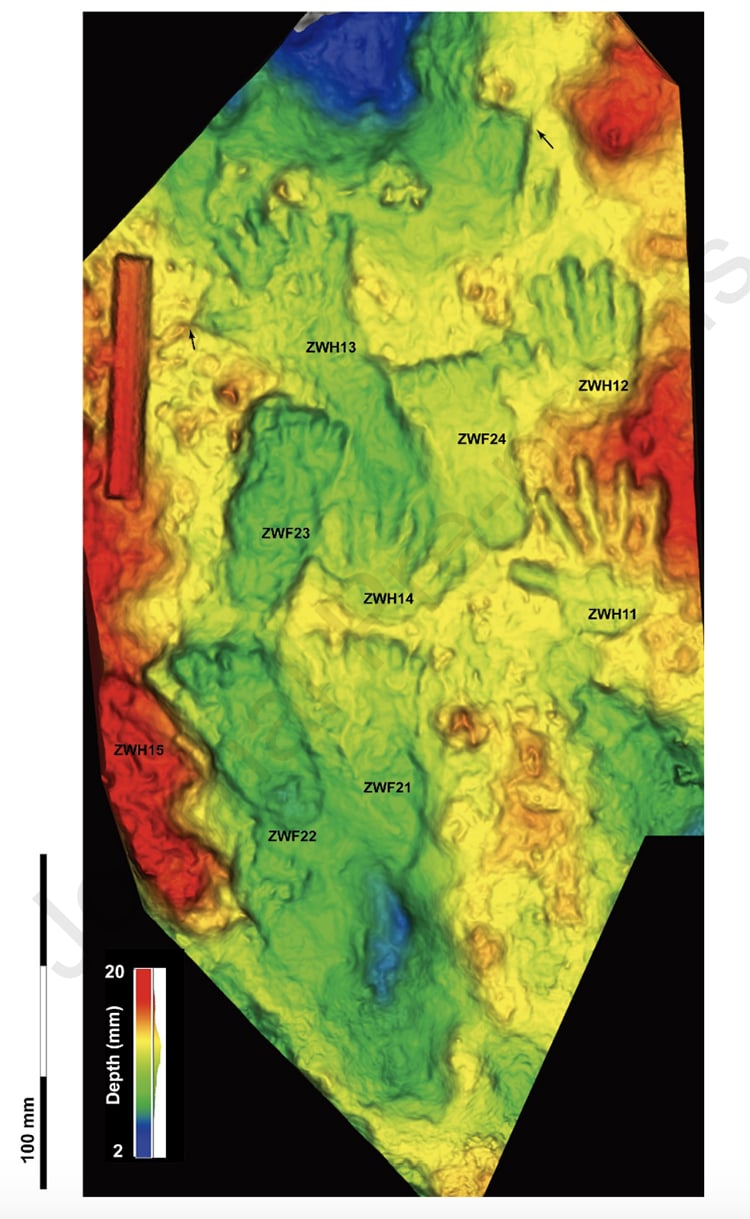Hand and footprints discovered near the Quesang village in the Tibetan Plateau.
(Photo:D.D.
Archeologists have found a shocking ancient analog in a slab of travertine marble near Quesang, Tibet.

Hand and footprints discovered near the Quesang village in the Tibetan Plateau. (Photo:D.D. Zhang et al./Science Bulletin)
The find consists of 10 prehistoric printsfive footprints and five handprints.
From the size of the prints, the team estimates they belong to a 7-year-old and a 12-year-old respectively.
The prints were left by some members of the genus Homo.

Handprint and footprint depths shown. (Photo:D.D. Zhang et al./Science Bulletin)
Are these prints the earliest example of cave art yet discovered?
The impressions date to between 169,000 and 226,000 years ago in the mid-Pleistocene period.
This makes them three or four times older than the oldest known cave paintings.

Some of the overlapping prints discovered. (Photo:D.D. Zhang et al./Science Bulletin)
However, are the prints intentional aesthetic?
Study co-author Thomas Urban believes their clear definition without slippage and their careful arrangement indicate intentionality.
Hesaid, Theyre clearly not accidentally placed.
However, the prints are nevertheless important evidence of the earliest known evidence of hominids on the Tibetan Plateau.
Researchers have discovered prehistoric handprints and footprints left by ancient children in Tibet.
Handprint and footprint depths shown.
(Photo:D.D.
Some of the overlapping prints discovered.
(Photo:D.D.